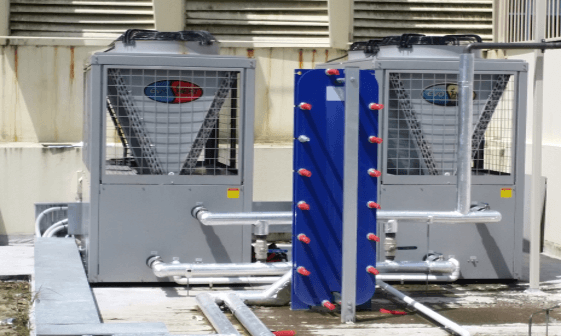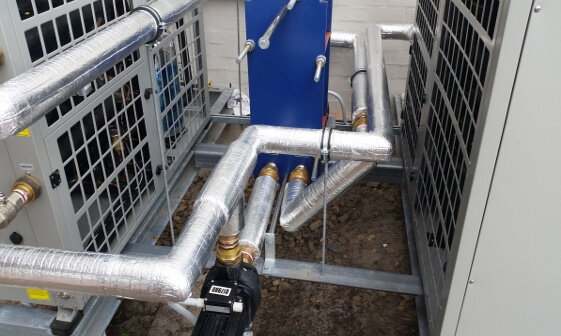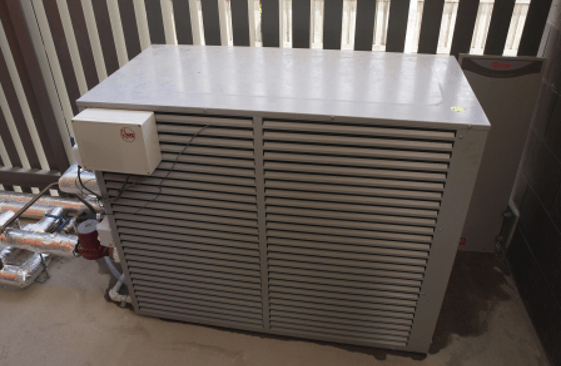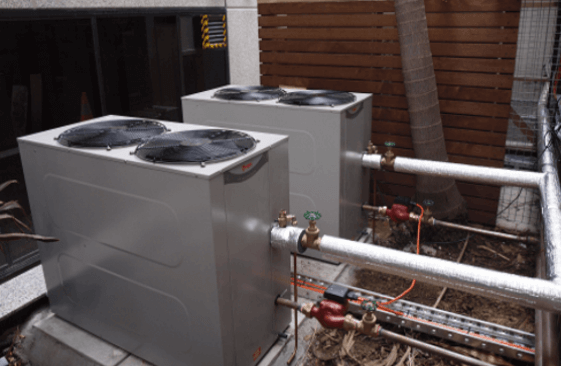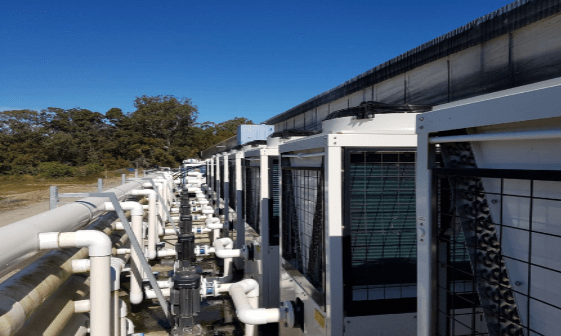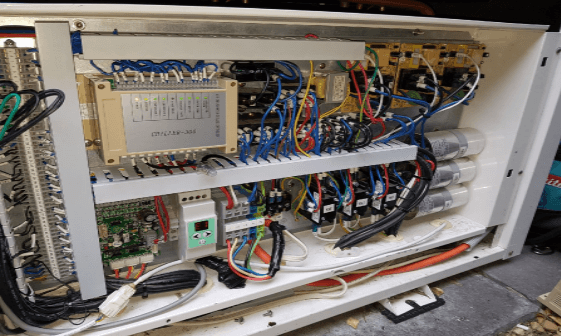Domestic Heat Pump Water Heaters in Australia
Background
Water heating in Australia is a major contributor to electricity use which leads to a major impact on greenhouse gas emissions.Heat pump water heaters offer an alternative of using electricity to heat water more efficiently than a traditional electric resistance system or a solar hot water set-up during the cold seasons when is fully electrical boosted.
Heat pump water heaters use refrigeration principles to extract&capture the thermal energy from the ambient air to a tank of water.They can also absorb heat from other natural resources like water,soil or recover heat from other conventional sources of energy like industrial ,refrigeration heat waste etc. However, the ambient environment provides an inexhaustible free heat energy and virtually unlimited the most common type of heat pump used in Australia may be described as an ‘air-source’ heat pump.
How HPWH Operate
Heat pump water heaters are refrigeration engineered devices which operates similar as air conditioners or refrigerators. They use refrigerant fluids with boiling point at minus -30 to – 55 Celsius degrees which can easily catch and transfer heat from one place to another. Through a circuit of pipes, heat exchangers and a push compressor the fluid expands, gasifies and absorbs heat in an ‘evaporator’ and on the other side of the cycles it liquefies and gives out the heat in a ‘condenser’.
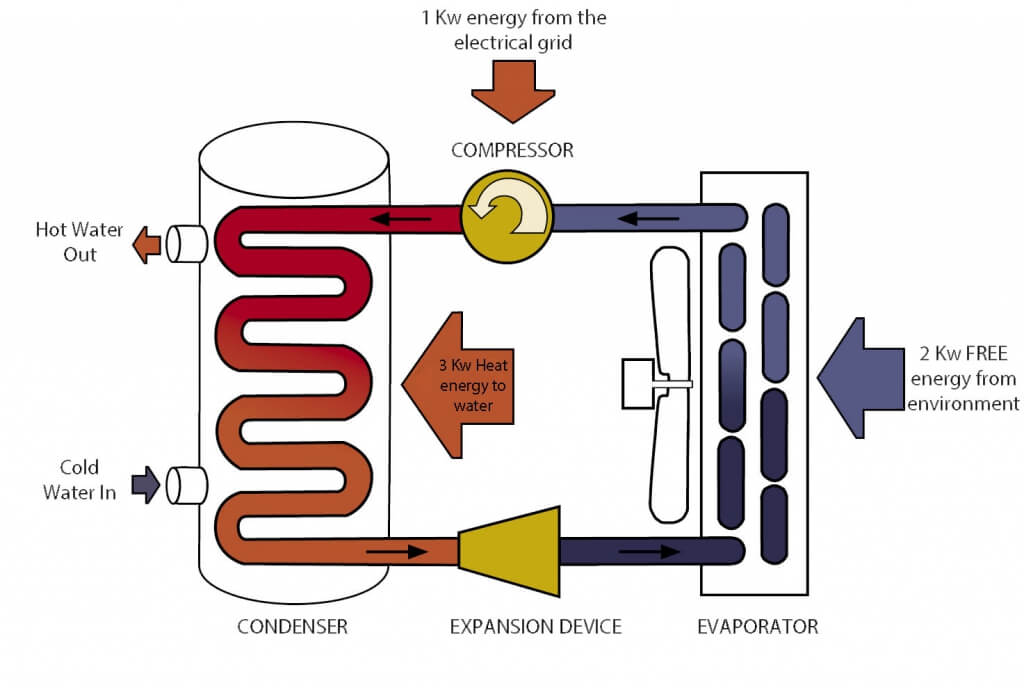
The ratio of the quantity of thermal energy transferred to the heated water to the amount of electrical energy consumed is called Coefficient of Performance (COP).Traditional electrical water heaters would have a COP just below 1.0 for every 1kw heat energy described as near -100% efficiency. By contrast a HPWH can develop a COP high above 1.For instance a COP of 3 means 2 kw free energy from the ambient air to every 1kw electrical energy taken from the grid that means 3kw of heat energy described to 300% efficiency.
Advantages of HPWHs:
- HPWHs have the potential to deliver more thermal energy than the electrical energy they consume
- They can operate on a standard power point without require special wiring supply for high current intensity (amperage)
- They provide a low greenhouse gas emission water heating option in areas without a natural gas supply
- HPWSs are generally less expensive to buy & to install compared to solar hot water systems
Disadvantages:
- The capital cost higher than an electric resistance or gas hot water system
- The COP of HPWH is reduced in colder ambient temperature
- The operation of a HPWH produces some noise which, if too loud, may disturb the householders and their neighbors
- If run in colder climates they can require a more expensive continuous electricity tariff to operate effectively
- Maintenance requirements -some brands require more maintenance than others
Types of air- source heat pump water heaters:
Plate evaporator with wrap-around condenser storage tank
The very first type of HPWH used in Australia for decades. The plate evaporators were constructed of two flat sheets of metal, embossed together to provide a path for refrigerant flow between the two sheets. The evaporator plates absorb whatever heat energy is available in the surrounding atmosphere, whether it is wind, rain, day or night. The refrigerant vapor is compressed through the compressor which raises the temperature of the gas, the vapor is then passed through the condensor coils that are wrapped around the water tank which heats up the water and as the vapour condenses it returns to it’s initial liquid state and the cycle is continuously repeated. The evaporator panels are placed either on the outside of the tank in the Compact unit or are located remotely on a wall or roof in the split unit :
Pros:
- Very reliable with minimal to none refrigeration maintenance for entire lifespan ot the unit
- Vermin proof due to no electronics
- Low running noise and electrical cost due to no evaporator fan requirements, heat exchanging taking place through natural convections effect
- Highly recommended for areas with high incidence of Total Dissolved Solids (TDS) in the water supply
- No water pump (circulator).
Cons:
- The system must be installed and commissioned by a team of refrigeration, plumber and electricians
- Bulky appearance, difficult to install or relocate.
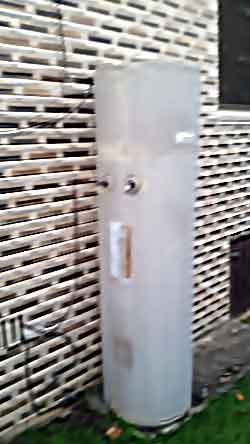
HPWH – roof split system
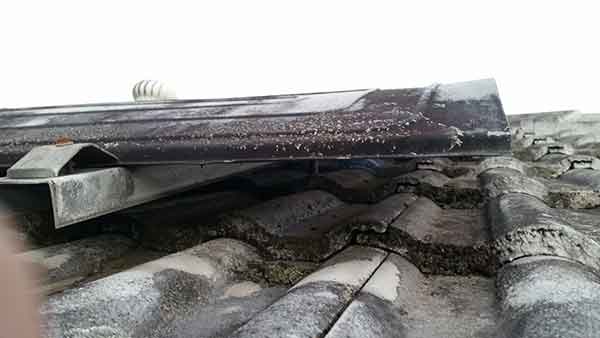
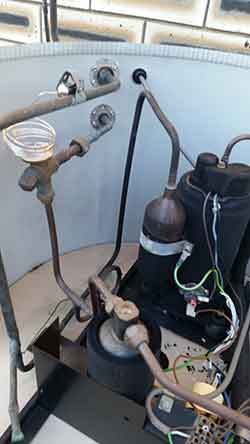
Integrated top unit with wrap-around condenser storage tank
These models are the next step forward improving the efficiency and COP using evaporator coil package fitted with a fan forced motor.
Pros:
- More electrical efficient, rapid hot water, easy installation or relocation
- No refrigeration work required although at the time of commissioning all the refrigeration components needs to be inspected making sure there is no abnormal pipe vibration, refrigerant leaks or other abnormal refrigeration issues after the transport on site
- No water circulators. Model suitable for areas where is a high incidence of Total Dissolved Solids(TDS) in the supplied water.
Cons:
- Running noise to be considered. Not suitable close to the bedrooms windows
- Regular maintenance according with the environment conditions. Brands fitted with an electronic controller requires a vermin free area.
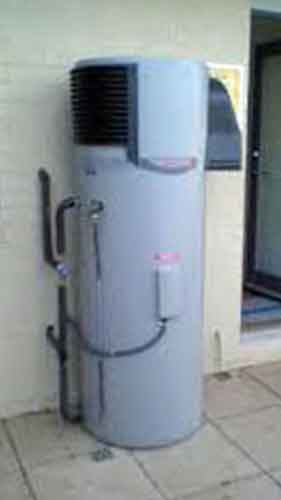
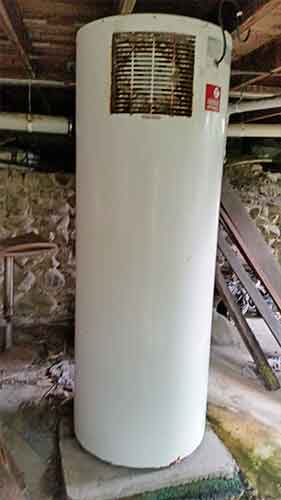
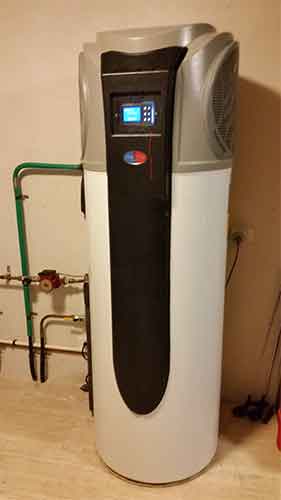
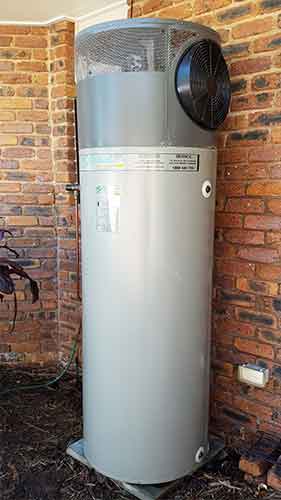
Integrated top unit with internal condenser storage tank
Similar with wrap-around condenser style with the difference the condenser coil is immersed in the water.
Pros:
- More electrical efficient, rapid hot water, easy installation or relocation
- No refrigeration work required although at the time of commissioning all the refrigeration components needs to be inspected making sure there is no abnormal pipe vibration, refrigerant leaks or other abnormal refrigeration issues after the transport on site
- No water circulators. Model suitable for areas where is a high incidence of Total Dissolved Solids(TDS) in the supplied water.
Cons:
- Running noise to be considered. Not suitable close to the bedrooms windows
- Regular maintenance according with the environment conditions. Brands fitted with an electronic controller requires a vermin free area.
- In some conditions the condenser coil may react with water in addition with the sacrificial anode resulting in internal massive sludge deposits. Not recommended for hard water areas.Rain water friendly.


Integrated top unit with tube in tube heat exchanger
The hot water is produced in a tube in tube vessel with very efficient heat exchanging ratio. The system contained a water pump as a circulator.
Pros:
- Powerful and very efficient HPWH.
Cons:
- Water pump circulator requires attention when supplied with hard water. Heat exchanger requires regular descaling
- If unit is electronically controlled a vermin free area is recommended.
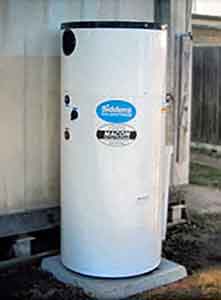
Integrated top unit with plate heat exchanger
The hot water is produced in a tube in tube vessel with very efficient heat exchanging ratio. The system contained a water pump as a circulator.
Pros:
- Powerful and very efficient HPWH.
Cons:
- Water pump circulator requires attention when supplied with hard water. Heat exchanger requires regular descaling
- If unit is electronically controlled a vermin free area is recommended.

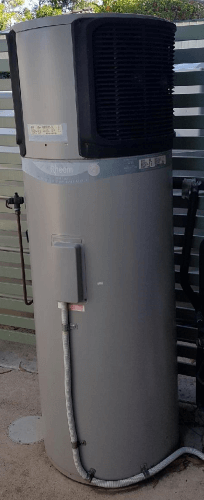
Split system unit with wrap-around condenser storage tank
The water tank has the role of refrigerant condenser holding the heat.
Pros:
- Highly recommended for areas with hard water chemistry, hard water, calcium & magnesium build up
- Storage tank can be fitted indoors
- Low maintenance costs.
Cons:
- The system must be commissioned by a team of plumber, electrician and refrigeration specialists.
- If unit is electronically controlled a vermin free area is recommended.


Split unit with tube&tube heat exchanger + storage tank
The major difference between this type and a wrap -around one is the whole water heating process is taking place in the refrigeration module. The interconnection pipes are destinated for water recirculation.
Pros:
- The interconnection pipes can be carried out by any licensed plumber although the refrigeration unit must be commissioned by a refrigeration specialist licensee
- Storage tank can be fitted indoors.
Cons:
- Water pump circulator requires attention when supplied with hard water. Heat exchanger requires more regular chemically descaling
- If unit is electronically controlled a vermin free area is recommended.




Tank attached unit with plate heat exchanger
Similar with the above type .The refrigeration unit is sitting attached to the storage tank
Pros:
- The hose interconnection can be performed by any licensed plumber although the refrigeration work must be commissioned by a licensed refrigeration technician making sure the refrigeration pipes are not rubbing the tank, sensors correctly attached, no electronically errors etc.
Cons:
- Water pump circulator requires attention when supplied with hard water. Heat exchanger requires more regular chemically descaling
- If unit is electronically controlled a vermin free area is recommended.
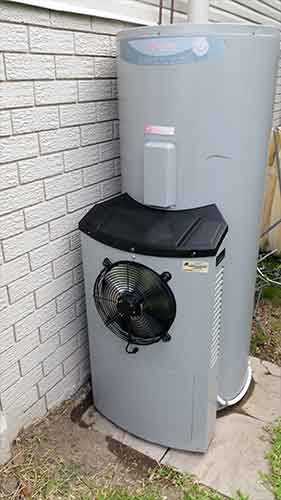
Commercial Hot Water
